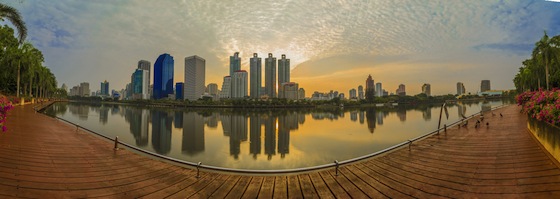It may not seem physically possible for a 950-foot-tall building to be just less than 60 feet wide and still hold its stature against the wind, but for Stephen DeSimone, president of DeSimone consulting Engineers in New York, working with the wind, instead of against it, is what makes these lanky skyscrapers so successful.
To keep these structures from crumbling to the ground on a windy day, DeSimone and his team built prototypes of each building and tested them out in wind tunnels. He discovered that breaking up the wind by catching it in cracks and openings slows it down, therefore decreasing the impact.
DeSimone has nicknamed his fellow architects, “starchitects,” for their ability to take these law-defying ideas and turn them into actual, standing structures. These masterminds have been able to create a building where every column slopes at an angle and a residential tower that literally hangs over the New York High Line.
It should come as no surprise that Manhattan is home to most of these soaring skyscrapers, but the trend has begun to spread to other cities with dense populations. In Miami, DeSimone is in the process of constructing towers that start out as squares, but twist and stretch into rectangles as they rise. While some may be apprehensive to the idea, the concept is brilliant and strategic as top units sell at much higher rates, so why waste space on ground-level units?
The skinny superstructures are even recognized on the other side of the globe. The Regent Emirates Pearl, a twisting hotel tower in Abu Dhabi, seems to have taken after the IAC building in Manhattan with every column standing at a slope. The Cayan Tower in Dubai has also become a well known landmark as the 73-story skyscraper contains a twist of 90 degrees.
While these towering buildings may not be the ideal choice for someone with a fear of heights, they are an incredible breakthrough for the construction industry through their use of aerodynamics to create more practical complexes, office buildings and hotels. As these never-before-seen skyscrapers begin to spread across the world, the architectural world can continue to evolve and expand.
For more innovative architecture, read more about structures that make us ask ourselves, Why Didn’t I Think of That?

